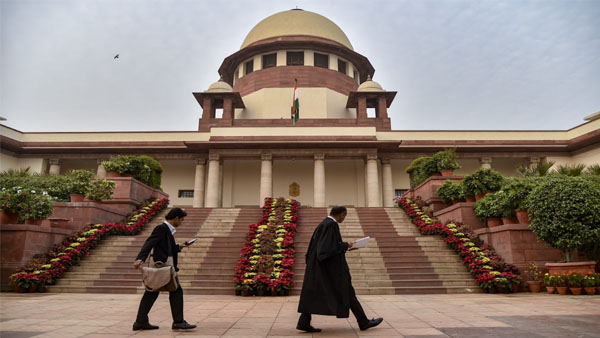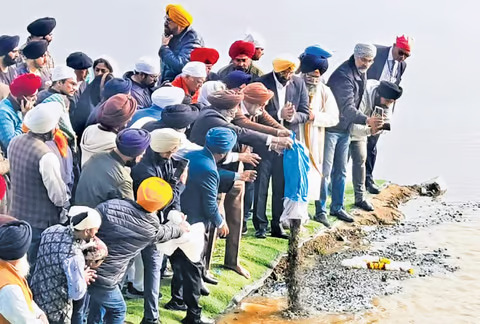By Dipak Kurmi
As 2024 draws to a close, the Supreme Court of India has once again proven to be a pillar of constitutional authority, delivering decisions that have had far-reaching implications for the nation’s political, economic, and social fabric. The year saw nearly 1000 judgements, covering a wide spectrum of cases, from electoral reforms to the rights of minorities. For those of us observing the Court’s role in shaping the nation’s future, this has been an eventful and, at times, contentious year. In this article, we reflect on the ten most impactful judgements delivered by the Court in 2024, each offering insight into the evolving landscape of justice in India.
Bilkis Bano Case: A Landmark Reversal of Remission
One of the most high-profile decisions of 2024 was the Supreme Court’s ruling on the remission granted to the convicts in the Bilkis Bano case. The convicts, who had been sentenced for life for their role in the gang rape and murder of Bilkis Bano’s family during the 2002 Gujarat riots, were controversially released by the Gujarat government. The Supreme Court’s two-judge bench quashed this decision, highlighting that the remission could only be granted by the Maharashtra government, where the convicts were sentenced. This judgement not only reaffirmed the Court’s commitment to upholding the rule of law but also exposed the Gujarat government’s role in facilitating the wrongful release. It set an important precedent, signaling that even political influence cannot overrule judicial scrutiny in cases of national significance.
Electoral Bonds Scheme: Restoring Transparency in Elections
Another defining judgement of 2024 came in the form of the Court’s ruling on the Electoral Bonds Scheme, which had been designed to facilitate anonymous political donations. A five-judge bench unanimously struck down the 2018 scheme, ruling that it violated the public’s right to know the sources of political party funding. The Court’s decision to halt the sale of electoral bonds and direct the Election Commission and the State Bank of India to disclose data on bond transactions was hailed as a significant step towards enhancing transparency in Indian elections. While the Court refrained from launching a formal investigation into the allegations of quid pro quo, the ruling has deepened public awareness of the connections between political funding, government contracts, and potential corruption.
Arvind Kejriwal’s Bail: Revisiting Bail Norms under PMLA
In a case that drew significant attention due to its political implications, Delhi Chief Minister Arvind Kejriwal was granted bail in connection with the Delhi Liquor Policy scam. The Court’s decision represented a shift in its interpretation of bail norms under the Prevention of Money Laundering Act (PMLA). Kejriwal had been detained for an extended period despite the trial not yet commencing, prompting the Court to revisit its earlier stance on stringent bail conditions. The ruling not only paved the way for the release of other opposition leaders in similar cases but also marked a significant departure from the Court’s previous position, establishing that “bail is the rule, jail is the exception.”
Sub-Classification within Reserved Categories: A New Chapter in Affirmative Action
In a landmark seven-judge bench decision, the Court upheld the states’ power to create sub-classifications within the Scheduled Caste (SC) and Scheduled Tribe (ST) categories. The judgement reaffirmed that sub-classification could be used to ensure substantive equality by addressing the varying degrees of discrimination faced by different communities within these categories. This ruling has set the stage for a potential shift in the affirmative action framework, with several state governments already moving towards sub-classifying within these groups. The decision has opened the door for a more nuanced and empirical approach to ensuring social justice.
Federal Autonomy: A Strong Defence of State Powers
The year also saw two significant judgements that strengthened the federal structure of India. In Mineral Area Development Authority v Steel Authority of India and State of UP v Lalta Prasad Vaish, nine-judge benches reaffirmed that states have significant legislative powers over certain subjects, including the regulation of mines, minerals, and industrial alcohol. These rulings were hailed as a victory for state autonomy, emphasizing that the Union government cannot extend its powers at the expense of states’ legislative rights. The judgements reinforced the importance of maintaining a balance between state and central powers, a crucial aspect of India’s federal framework.
Criminalizing the Possession of Child Pornography: A Global First
In a significant step towards safeguarding children’s rights, the Supreme Court ruled that possessing child pornography would be punishable under the Protection of Children from Sexual Offences (POCSO) Act. This judgement, which clarified that both possession and the failure to delete such material are punishable, made India one of the first countries to explicitly criminalize the viewing and storing of child sexual abuse material. The Court’s decision has put greater pressure on internet intermediaries to act swiftly in removing such material, setting a strong precedent for global child protection standards.
Assam Accord and Citizenship Law: A Complex Verdict
The Supreme Court’s verdict on Section 6A of the Citizenship Act, which deals with the implementation of the Assam Accord, was another key decision of the year. The Court upheld the validity of Section 6A, which grants citizenship to those who entered Assam before 24 March 1971. While this decision provided clarity on the citizenship status of thousands of immigrants, it did not meet the expectations of native Assamese groups, who had sought a stricter cut-off date. This case highlighted the complex interplay between migration, identity, and regional autonomy, issues that remain at the heart of Assam’s political discourse.
Property as a Material Resource: A Long-Awaited Constitutional Ruling
In a major ruling that touches upon economic democracy, the Supreme Court clarified the constitutional status of privately owned property. In the case Property Owners Association v State of Maharashtra, a nine-judge bench reaffirmed that Article 31C of the Constitution, which shields certain laws from fundamental rights challenges if they aim to fulfill the Directive Principles of State Policy, continues to hold sway. The bench also clarified that private property would not automatically be considered a “material resource” of the community, thus preserving the Constitution’s vision of economic democracy.
Aligarh Muslim University: Affirming Minority Rights
In a landmark seven-judge bench decision, the Supreme Court ruled that Aligarh Muslim University (AMU) could claim minority status under Article 30 of the Constitution, overruling a 57-year-old precedent. The Court’s ruling that institutions incorporated by legal instruments could still claim minority status if founded by a member of the minority community marks a significant shift in the interpretation of Article 30. This decision has profound implications for educational institutions across the country that seek to assert their autonomy and preserve their minority character.
Guidelines to Curb Illegal Bulldozer Demolitions: A Win for Human Rights
The year concluded with a landmark judgement on the controversial issue of bulldozer demolitions. Following a series of demolitions of homes belonging to Muslim individuals accused in communal violence, the Court issued detailed guidelines to curb such actions. The judgement emphasized the right to shelter and warned against the use of bulldozers as a tool for extrajudicial punishment. The guidelines, which require authorities to provide written notices and conduct hearings before demolitions, have set a strong precedent for protecting the fundamental rights of citizens and preventing executive overreach.
A Year of Constitutional Milestones
The Supreme Court of India has once again showcased its pivotal role in shaping the country’s legal and political landscape in 2024. Whether defending democratic principles, promoting transparency, ensuring justice for marginalized groups, or reinforcing federal autonomy, the Court’s judgements have been far-reaching. These top 10 decisions underscore the Court’s commitment to the Constitution, as well as its capacity to address the evolving challenges faced by Indian society. As the country moves into 2025, these rulings will undoubtedly continue to influence the trajectory of India’s legal, political, and social discourse.
(the writer can be reached at dipakkurmiglpltd@gmail.com)



